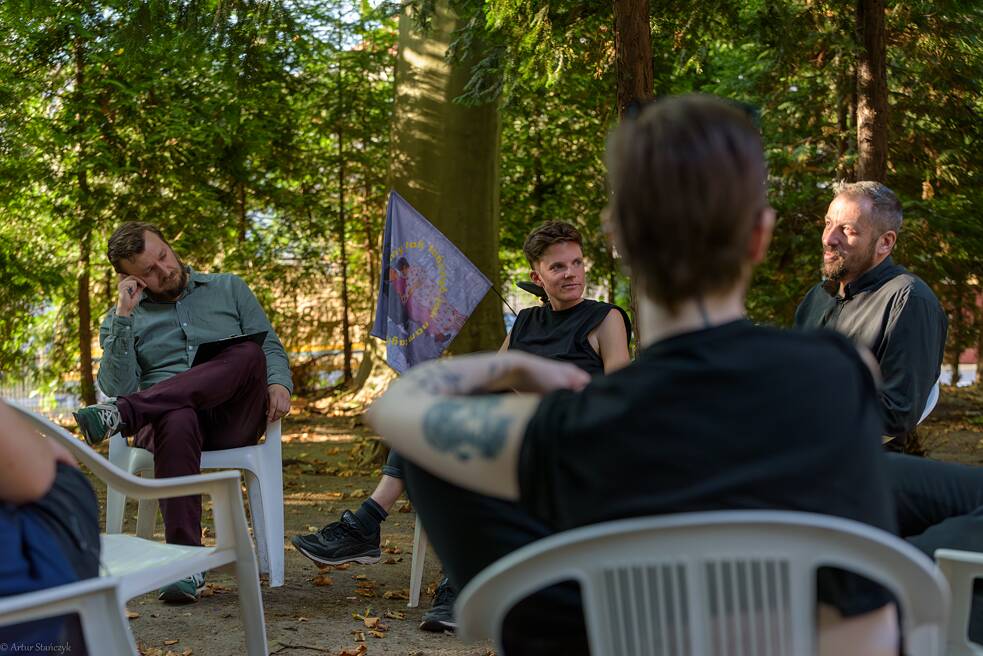July - August 2024
Sztandary dla Śląska: Irène Mélix’s Residency at Miasto Ogradow, Katowice, Poland
Biking as Art and Research
Irène Mélix journey started in her hometown, Dresden, all the way to Katowice, using her bike as more than just a mode of transport. By cycling instead of using other kinds of transport she focused on exploring cycling as a way to navigate historical and social landscapes while promoting sustainable urban practices. Using her bike as a vehicle for both travel and research, Mélix engaged deeply with Katowice, uncovering layers of its history and culture and culminating in the creation of custom-designed flags, or ‘sztandary,’ that symbolised her journey and findings.
Designing Flags that Unite Past and Future
Through research on Silesian history, culture and language as well as visiting a whole range of different areas and museums Mélix dived into the complex identity of Silesia. Building on the region’s rich visual and historical cues, Mélix designed a series of flags that symbolised the ongoing narratives of Silesian identity and the region’s transformation as well as themes of mining, industry and resilience. For her, these flags were sketches of fragmented histories with meanings that endure into the future, embracing ecological change. Mélix’s flags were presented to the public for the first time during a public event at Dom Śląski by BoMiasto, where Mélix and Polish artist Witold Szwedkowski discussed walking and cycling as artistic practices. The event managed to spark media interest too, with coverage by major outlets such as wKatowicach and Śląska Opinia.
Reflections on a Journey of Discovery
Originally, Mélix planned to hold a ‘critical mass’ cycling event as well, with participants riding through Katowice carrying the custom flags she designed. While weather ultimately cancelled the event, the journey and research she conducted in the city laid the groundwork for a lasting impact. Mélix hopes that her flags will find future audiences, perhaps even in Saxony, whose history intertwines with that of Silesia.
Through this residency, Mélix demonstrated how art, history, and community engagement can come together to foster meaningful connections and inspire transformation. For Mélix, the residency provided a unique opportunity to experience and contribute to Katowice’s cycling culture while honouring the stories that shaped its past.
Thanks to: BoMiasto, Miasto Ogrodów and Goethe-Institut, Czechia. Special thanks also to the Muzeum Historii Katowic, Joanna Tofilska-Dzióbek, who gave me access to their sztandary/ flags in the archive. Thanks to Grzegorz Franki for the readiness to share his knowledge.



